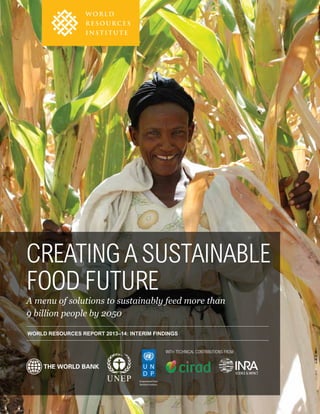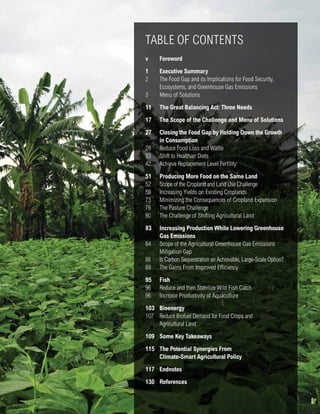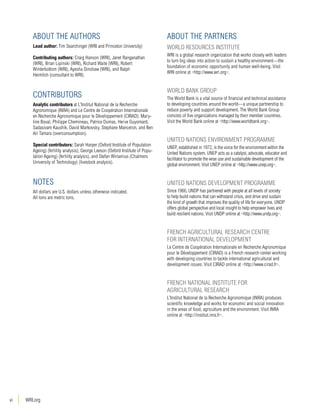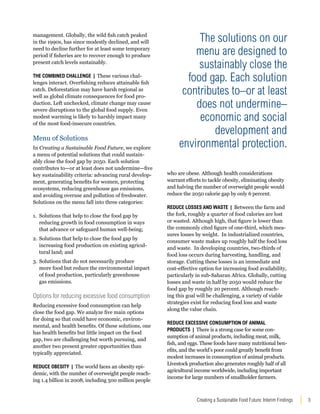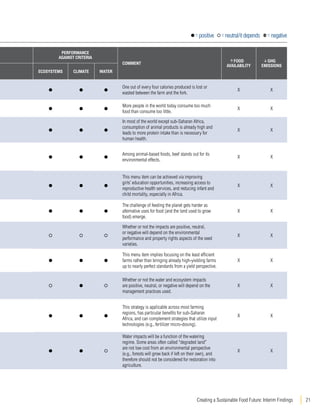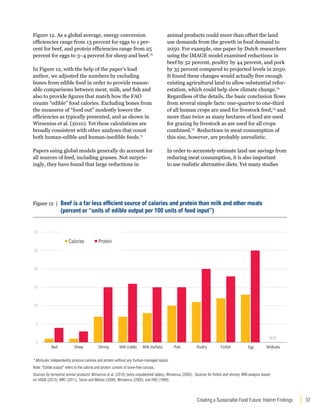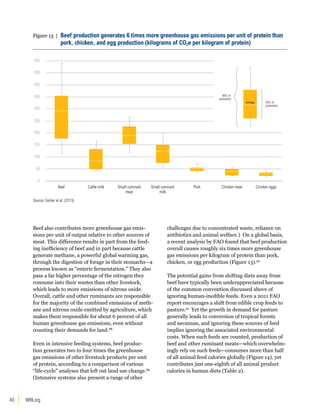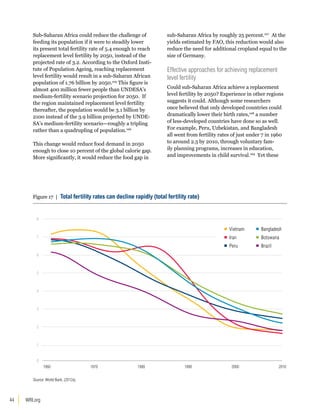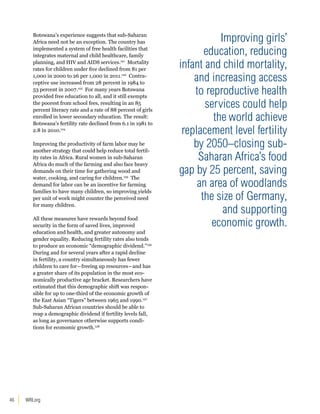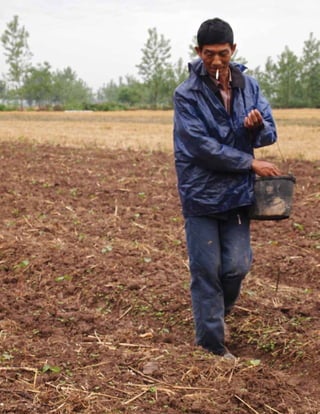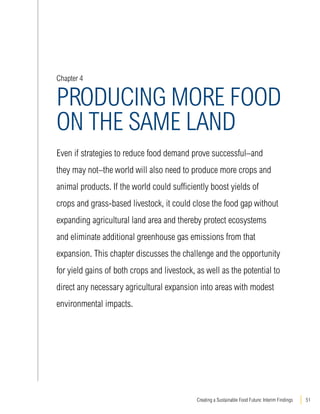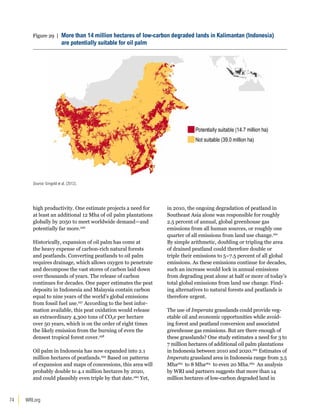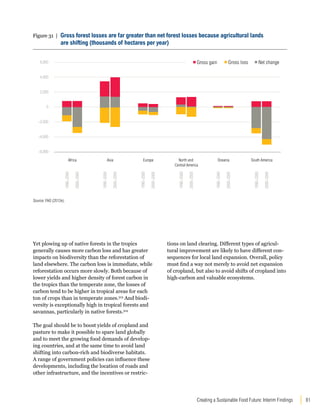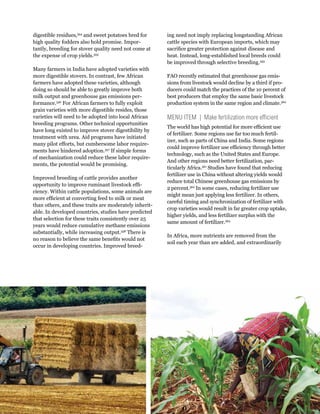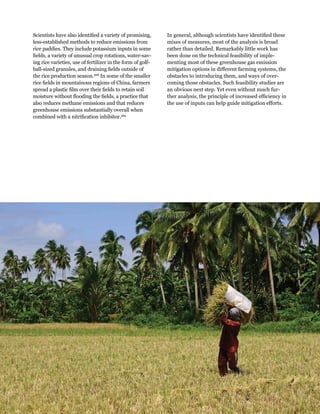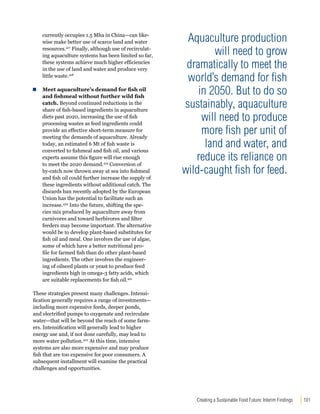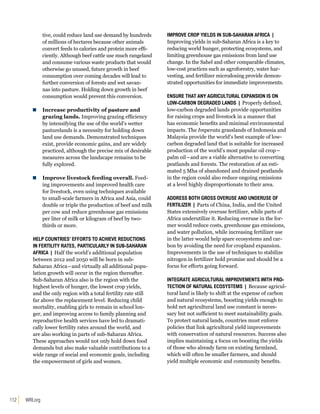The document summarizes the major challenges facing the global agricultural system by 2050:
1) A 70% "food gap" must be closed to feed a projected population of 9.6 billion people while reducing environmental impacts;
2) Agricultural production must increase to close this gap while also providing economic opportunities for the world's 2 billion smallholder farmers and reducing poverty;
3) Land and water constraints mean crop and pasture yields must increase substantially faster than in the past to avoid further ecosystem degradation from agricultural expansion.
